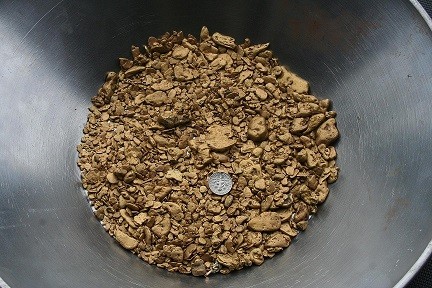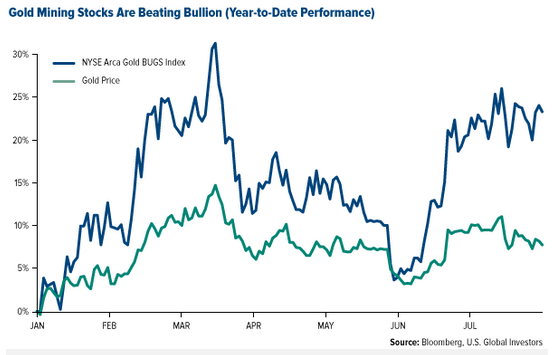Strike Gold With Junior Mining
Post on: 24 Июнь, 2015 No Comment

The value of gold, silver, platinum and other precious metals has soared since 2002.
Prices of these metals remain on the rise, driven by high demand and limited global mine supply.
Junior exploration companies are poised to benefit most, but do you know how to choose the right one? Read on to learn about the niche junior companies occupy and the important things you need to look for to ensure you aren’t investing in the next Bre-X.
(To learn more about the Bre-X debacle and other investment nightmares, check out The Biggest Stock Scams Of All Time and The Ghouls And Monsters On Wall Street.) Junior Companies Play a Senior RoleA junior mining company is an exploration company that looks for new deposits of gold, silver, uranium or other precious minerals.
These companies target properties that are believed to have significant potential for finding large mineral deposits.
Junior exploration companies are a major source of future mine supply.
They find promising properties, prove the resources, stake the raw material and bring mines into production.
With highly trained geologists, geophysicists and engineers on staff, it is the junior mining company that typically is best positioned to determine whether a property is economically viable.
Juniors are critical players in the early stages, bridging the long lag time between when a new deposit is found and when it is brought into production.
Fields Of Green And BrownThere are two types of exploration: green field and brown field.
Green field exploration refers to uncharted territory, where minerals are not already known to exist.
Brown field exploration refers to areas where deposits were previously discovered.
Not surprisingly, green field exploration is riskier and more expensive than brown field, but the potential payoff is much higher, too.
(This exploration is similar to green field and brown field investments, which deal with companies choosing to build new production facilities or lease/purchase old ones.) Once a site has been selected, junior exploration companies then map the geological characteristics of the area in great detail.
Geologists will use both on-the-ground analysis and remote sensing devices from the air to evaluate the physical properties of prospective ore bodies.
Target areas are then chosen for more in-depth research, including ground-based seismic surveys and gathering samples to get a clearer picture of where to start digging.
Properties and ProjectsThe first place for investors to begin their research is to examine the junior’s portfolio of properties and projects.
It is important to understand the nature of each property, and to ensure the company has just enough — but not too many — projects in the pipeline.
While it is easy to find reams of technical details and photos on a company’s prospective reserves, translating all that geological mumbo-jumbo is tough for the novice investor.
Here are a few things to focus on: Location, location, location: Companies with projects or properties that are near currently operating mines — or mines that were once in production — are usually a safer bet than those with pure greenfield targets where no known deposits have ever been discovered.
The added advantage of properties near known mineralization is that there is likely to be existing infrastructure, such as roads, water and electricity.
This makes it easier and cheaper for a company to bring mines into production.
Weather is also a factor.
For example, the northern regions of Canada can suffer from a short exploration season due to severe winters, while in southern countries, such as Mexico, drilling can take place year round.
Management, management, management: Most junior companies rely on very small management teams, yet the quality of the senior staff is arguably the single most important success factor.
When evaluating management risk, ask yourself some important questions: Does the team include geological engineers with extensive experience in precious minerals? Has the team worked together in the past, and do they have a track record of finding the gems they seek? Can the CEO or President negotiate deals and raise capital? Exploration is a very chancy and capital-intensive business.
The right management team makes a world of difference when it comes to gaining the confidence of investors in order to raise the funds and buy the time necessary to bring mines into production.
(For more insight, see Evaluating A Company’s Management and Putting Management Under The Microscope.) Governmental and Environmental Regime: Not all countries or states are mining-friendly.
Political pressures can cause governments to change their policies overnight, from one of openness to one with heavy restrictions and penalties.
This is known as political risk.

Junior companies that boast rich mineral reserves in a mining-friendly location with low governmental interference are good bets.
Organizations such as the Fraser Institute rank the mining attractiveness of countries all over the world, and are a good information source for investors.
(For more help measuring the risks versus the rewards, read What Is An Emerging Market Economy.) Favorable Commodity Price and Supply/Demand Conditions: The outlook for share prices of junior mining companies can be volatile because these prices are closely related to the supply/demand and price characteristics of minerals.
The key drivers of precious metal prices vary for each type.
Gold, for instance, is both a commodity and an investment and its price is strongly affected by macroeconomic expectations, inflation, the strength (or weakness) of the U.S.
dollar, and holdings of physical gold by consumers and central banks.
For silver, platinum, uranium and other metals, different factors are important.
Investors can turn to resources such as the World Gold Council, Gold Field Mineral Services, The Silver Institute and the World Nuclear Association to gain a better understanding.
ConclusionJunior mining companies carry more risk than senior mining companies because they explore for new mine deposits.
At the same time, their shares are priced more attractively and offer significantly more upside.
Investors can profit by selecting those juniors that appear most likely to discover and exploit first-rate reserves in the ground.
Remember to look for experienced geologists and engineers, promising properties with historical mineral findings, favorable regulatory and governmental environments, constructive precious metals pricing and supply/demand conditions and strong management teams.
For help determining if junior mining companies are too risky for you, check out Determining Risk And The Risk Pyramid.
googletag.cmd.push(function() < googletag.display(‘AdSlot_BC-TextNote’); >); TAGS: Gold Investing Strategy Precious Metals














